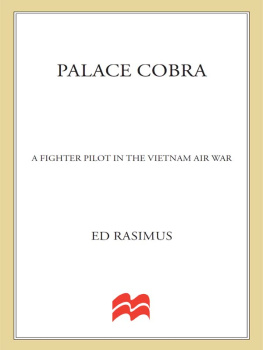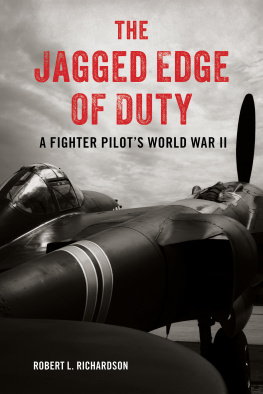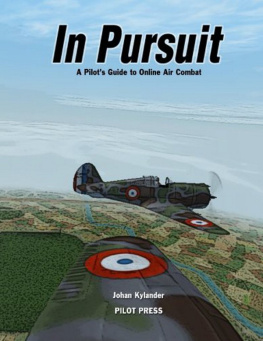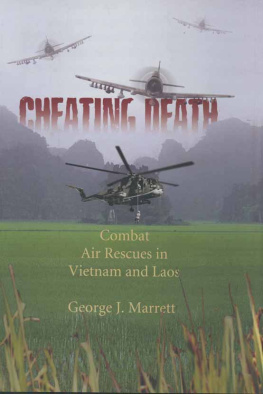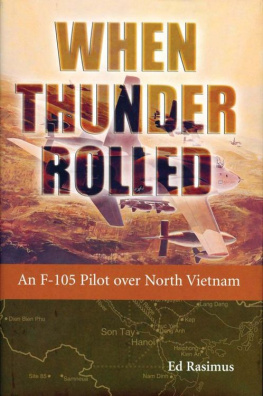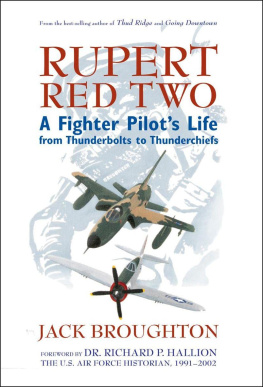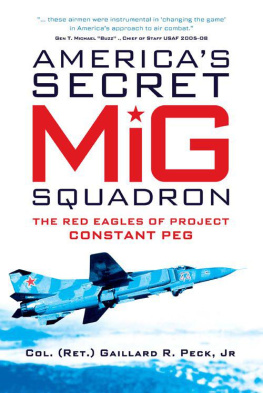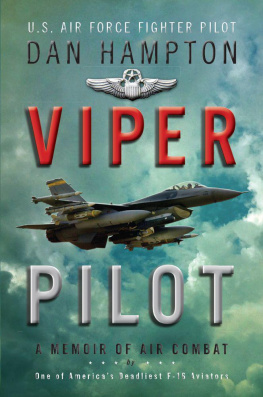Praise for Palace Cobra
A must-read.
The Oklahoman
A superb story and another triumph by Ed Rasimus.
Walter J. Boyne, author of Operation Iraqi
Freedom: What Went Right, What Went Wrong, and Why
The American taxpayer got double value from Ed Rasimus. He volunteered for combat in 1968 and again in 1972 (the subject of this wonderful book). Now, in retirement, he joins Saint-Ex and Ernie Gann as a masterful spinner of books about flying and survival.
Daniel Ford, author of Flying Tigers:
Claire Chennault and the American Volunteer Group
Ed Rasimus is one of those unique air warriors who [is] both hero and authorand hes damned good at both endeavors.
Tom Bear Wilson, author of Termite Hill
This book by American fighter pilot Ed Rasimus is not another and there I was story. To those of us who were there it sweeps back vivid memories, bringing the past into sharp focus and evoking a deep sense of brotherhood for those with whom we worked and fought. For the history buffs, this is as real as it gets without your having been there.
Robin Olds, Brig. General USAF (Ret.)
Put on your G suit and helmet as Ed Rasimus once again takes you into white-knuckle, SAM-dodging combat. Rasimus takes you behind the scenes into the myriad of details of a combat fighter pilots Vietnam air-war tour of duty, on and off base. Further, he sums up those air warrior days as those when patriotism was a virtue and courage expected.
Mark Berent, author of the Rolling Thunder series
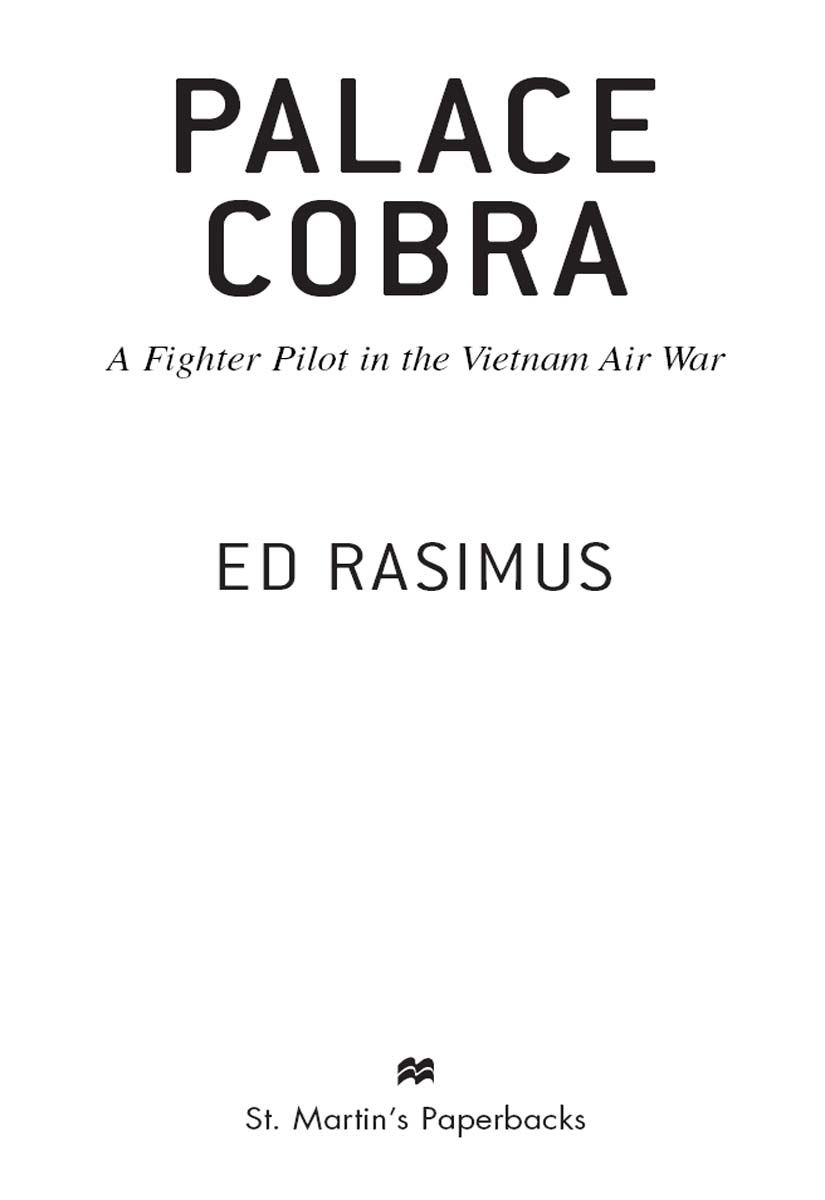
To Bill Loyd and Bill Sparks,
who are two giants in a profession filled
with larger-than-life personalities.
They taught me what it means to be a fighter pilot.
Contents
Acknowledgments
The first indication that future historians will have that our Vietnam War was badly flawed will come from the static nature of the conflict. How we failed to notice that year after year we hadnt made any progress will confound them. They will look at the establishment of operating bases and the deployment of forces, and they will be impressed at our ability to create such massive infrastructure and conduct such intensive operations on the far side of the world. They will compare the force structure of the United States to that of its opposition and understand the reasonable degree of optimism we had at the start.
Then they will dig deeper, because that is what historians do. They will seek the rationale for our gradualism and caution in the buildup and targeting. They will nod their heads and sympathize with the caution we exercised as we tried to understand the complex relationship of client states to superpowers in a nuclear world. Yes, they will agree that we had to move slowly, and that it was reasonable to seek solutions with the minimum of military might. Certainly they will concede that the goal of democracy rather than Communism in a developing nation was a good one. They will have the benefit of more than thirty years of analysis as they acknowledge that George F. Kennan was right and that Communism, if contained, would fail. It will be apparent that the resistance to Communism anywhere in the world, espoused by the Truman Doctrine and then the Dulles domino theory, was fatally flawed in that it allied us with corrupt and often repressive regimes whose only redeeming quality was that they were anticommunist.
The political historian will link the politics of populism to the ebb and flow of the air campaigns. They will see seekers of the presidency counting the numbers and finding the resistance to a long-distance war as a more appealing constituency than the supporters. The cultural historian will view the failure of America to recognize the nuances of Asian culture as pivotal. Had we learned about the history of Southeast Asia and the traditions of the people, we might have understood what we were trying to do much better. The sociological historian will connect the Spock generation of self-centered baby boomers with the wars opposition and their desire for world peace at any cost with the failure. The organizational historian will examine the bureaucratic infighting of the American military and see the competition between Air Force and Navy as wasteful and inefficient. They will look at how the leadership fostered the McNamara era of body counts and analysis, square-filling and careerism. It may all come together.
Im no historian. I was merely a participant in the games. Ive been able to recount the stories and hopefully shed some light on the events. The stories are true, they all happened. Some are intense, others are mundane. They reflect the ethos of the time and shaped my attitudes on life. Ive pulled few punches and have probably stepped on a few toes in these tales. I freely admit they are my recollections and impressions. The good guys were really good, and the bad guys were good as well, they just didnt measure up to the arbitrary standard in my mind. All put their lives on the line, following the orders of their lawful superiors and doing the best they could. War is a personal thing, and the recounting of a war is inevitably colored both by impressions at the time and by stewing in the juices of thirty years of memory.
Ive been encouraged throughout the process by the support of my wife, Carol, who, despite nagging me incessantly about the technical details that bore her, always offers constructive criticism about the interpersonal descriptions. Shes a great critic, and I take most of her advice. A fighter pilot, after all, cant take all of a womans advice, or he would lose his credibility.
The impetus to get started on the tales came from my two significant writing mentors, John Sherwood, official historian USN, and author of Fast Movers: Americas Jet Pilots and the Vietnam Experience, and Marshall Michel, author of Clashes and Eleven Days of Christmas. Each provided me with feedback on my efforts and direction. They opened doors and helped me to put a book in peoples hands.
Memory is a fickle thing. Ive drawn on friends and associates from the years in the fighter flying business to recapture names and understand perspectives on what was going on. Among the most dependable for background were Turk Turley, Tom Coady, Ed Cleaveland, Ed Rock, Bob Hipps, Swede Seagren, and Robin Olds. Occasionally the story exchanges run late into the night, and the potential for damage to either wallet or liver can be significant in those sessions.
No one who did not experience it can ever truly understand the POW experience, but the corner of the tent was raised for me just a bit by the ex-cons who were willing to talk a little about it. I owe a lot to Jack Van Loan, Paul Galanti, Ted Sienicki, and Dave Mott, who provided some glimpses.
Spell-checkers and grammar corrections from word processing software are fine, but they dont catch everything, and nothing is more informative than an old friend telling you when you are pontificating or sugar-coating. For their opinions, I need to thank Bill Stroud, George Marrett, Bull Kittle, and Joe Myers, who took a look at the manuscript in very rough form and offered input. Positive strokes are always good, but the occasional boot in the posterior is also necessary from time to time. My thanks to all.
Credo :
Because somewhere in me is still the little boy,
who wants to kick the can and write on walls,
and hitch rides on the tailgates of trucks,
and pull little girls pants down.

